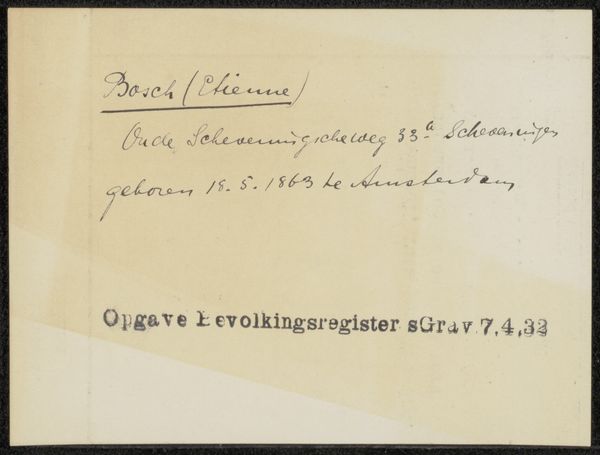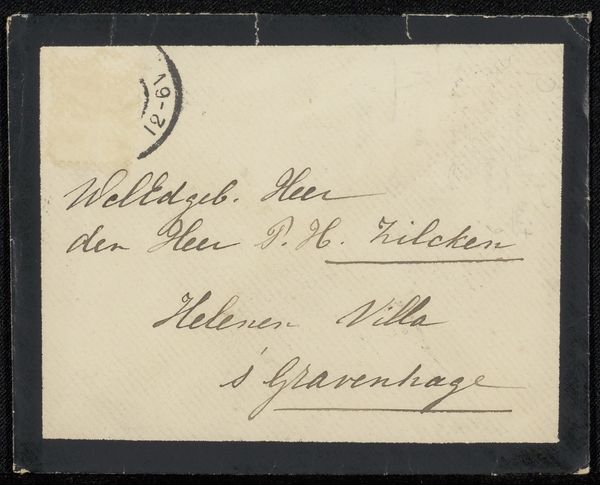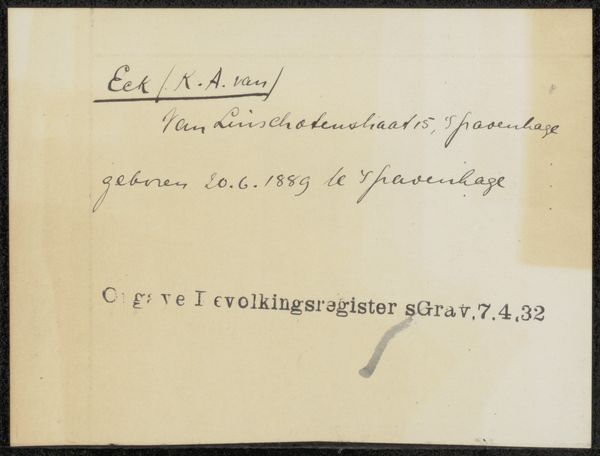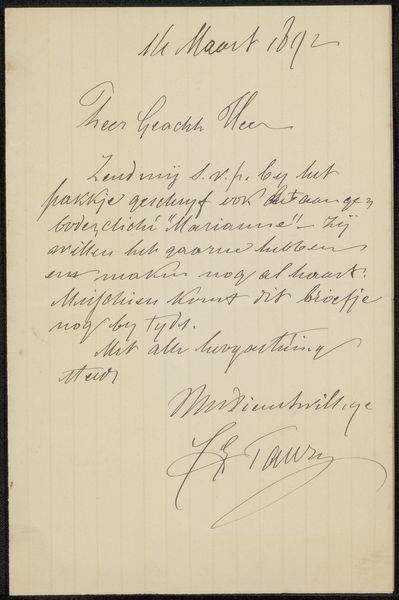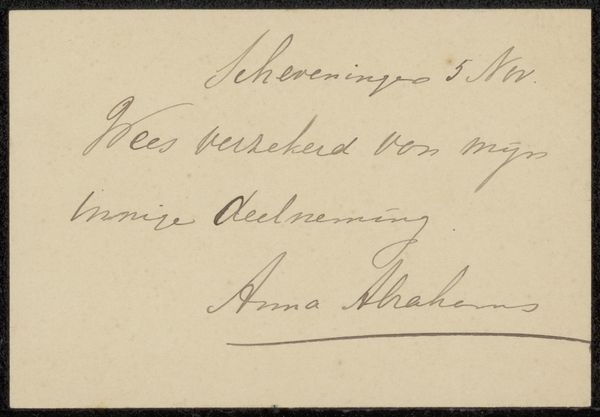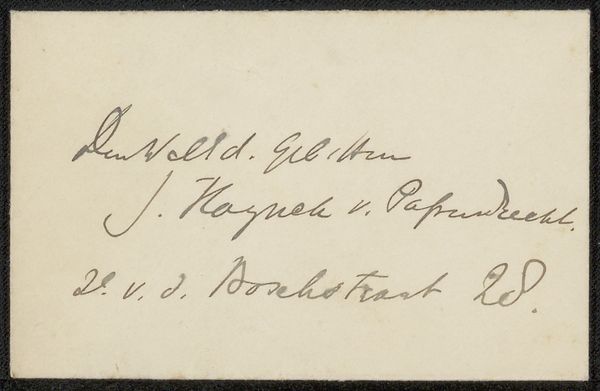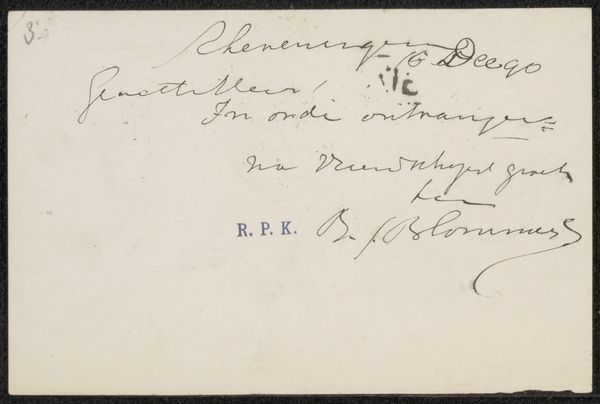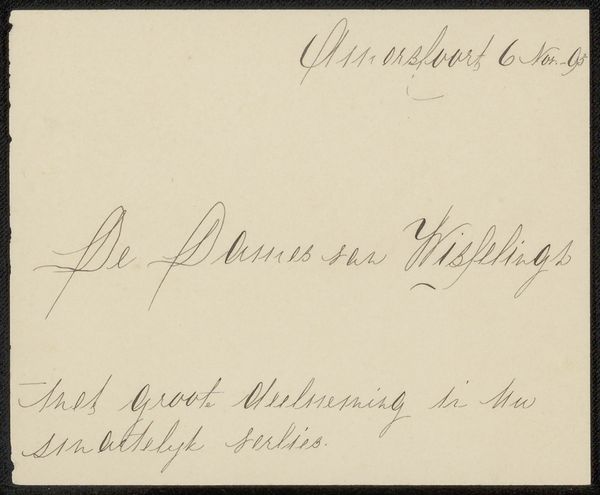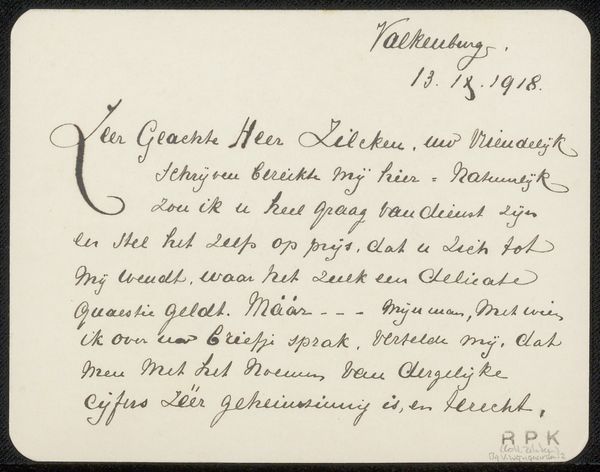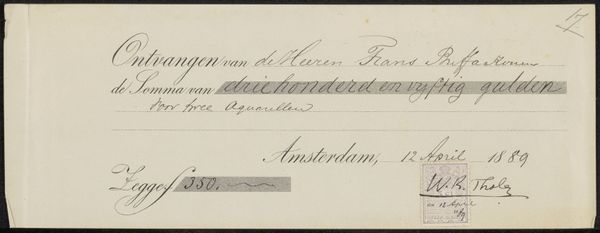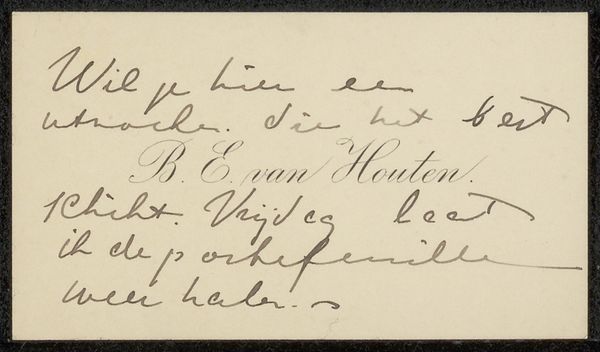
drawing, textile, paper, ink
#
drawing
#
script typography
#
hand-lettering
#
ink paper printed
#
old engraving style
#
hand drawn type
#
hand lettering
#
textile
#
paper
#
personal sketchbook
#
ink
#
hand-drawn typeface
#
thick font
#
handwritten font
#
calligraphy
Copyright: Rijks Museum: Open Domain
Editor: Here we have "Document betreffende Hendrikus IJkelenstam," possibly created between 1932 and 1936. It’s a simple document, ink on paper, with a handwritten script. I’m struck by how intimate and yet bureaucratic it feels at the same time. How do you interpret this work? Curator: This seemingly mundane document is deeply compelling when considered within its historical context. The neat handwriting and bureaucratic language stand in stark contrast to the tumultuous era in which it was created. The 1930s in Europe were marked by rising fascism and increasing persecution. Does the name IJkelenstam resonate with you? Editor: I can't say that it does immediately, no. Curator: This document could very well be related to someone attempting to prove their identity or origins during a time when such proof could be a matter of life and death. Consider the coded language often employed during periods of oppression and war. The seemingly innocuous details - address, date of birth, registration information - become incredibly potent signifiers. The very act of documenting becomes an act of resistance, an assertion of existence. What feelings arise knowing its potential purpose? Editor: It’s heartbreaking. The handwriting suddenly feels much heavier. Knowing that the creation of this document might have been crucial to someone's survival completely changes my perception. It highlights the power of the written word, both for oppression and for resistance. Curator: Precisely. And that tension, between the personal and the political, the official and the individual, is what makes this seemingly simple document so powerful and relevant, even today. It compels us to question the narratives we inherit and to recognize the potential for activism, resistance, and reclaiming identities that even seemingly neutral documents possess.
Comments
No comments
Be the first to comment and join the conversation on the ultimate creative platform.

